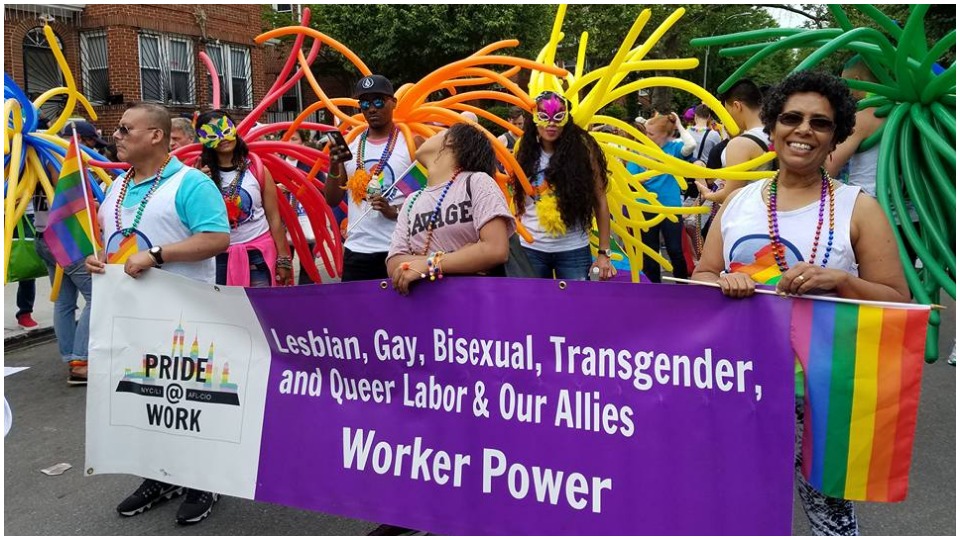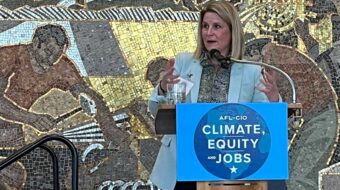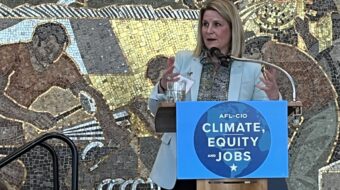
“You don’t look like a union guy.” It’s a phrase that’s been running through my mind as Pride month comes to an end and I think about the visibility of the LGBTQ community in the labor movement. A few weeks ago, I had this brief exchange on a gay dating app:
Man: You don’t look like a union guy.
Me: What does a union guy look like?
Man: Based off of someone I went to school [with], a unionist only wears a t-shirt and looks either somber or angry.
Me: LOL I guess you don’t know many of us, then.
I put my phone down, my mind racing through faces and stories of colleagues who are far from this man’s myopic view of the labor movement. I started to become agitated, asking myself questions: Am I not union enough? Does he think LGBTQ people don’t belong in unions?
Last year, AFL-CIO President Richard Trumka noted that “For many LGBTQ Americans, a union card is their only form of employment protection.” In the 28 U.S. states where queer and trans workers can still be fired due to their sexual orientation and gender identity, he’s 100% correct.
The truth is, anyone can be union, and we don’t wear t-shirts every day, nor are we always somber or angry. Being union isn’t about clothing choice or facial expressions, it’s about values. Being union is knowing that – regardless of who you are and what makes you unique – at work, we’re all equal. At work, we stand arm in arm with the person next to us because we know we’re stronger together than alone.
When I first started to work for the AFL-CIO in 2016, I wasn’t convinced that I would fit in with the labor movement. It turns out that I, too, was biased by the “union guy” myth. Thanks to a great manager and accepting coworkers, I realized that the union movement could have space for me, too.
Last August, my fellow union members – members of the Washington Baltimore News Guild – elected me unanimously as their union leader, the first time an openly gay person has held the position.
That’s not to say there haven’t been moments that have made me cringe. I never knew that campaign messaging could make someone “sound like a f*ggot,” or that a woman who doesn’t wear dresses and crosses her arms has “hostile body language”. I’m struggling to accurately count how many times I’ve had hostile body language in the last week if that’s the definition. There is obviously still room for improvement, but that’s not unique to the labor movement.
As AFL-CIO Vice President Tefere Gebre said earlier this year, “The scourge of racism, sexism, Islamophobia, xenophobia, discrimination, and hate isn’t just a Donald Trump problem. It’s an American problem. And it affects our labor movement just like it affects the rest of our society. And we need to call it out and fight it.”
To say that Pride is about visibility isn’t entirely accurate. Pride is about intentionally creating space where one can be comfortable feeling visible.
Creating that intentional, inclusive space at work takes a commitment to change. Inclusive contracts are only the beginning. Collaboration between willing employers and employees to foster a more inclusive culture is what is truly needed. Unions have been and will continue to be a force to demand that collaboration, and I am excited about the role AFL-CIO Guild members will play in that conversation.
So don’t let the “union guy” myth fool you. We’re here, we’re queer, and we’re union.












Comments